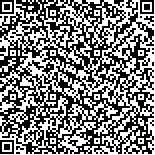本文已被:浏览 55次 下载 33次
Received:June 11, 2024 Published Online:April 20, 2025
Received:June 11, 2024 Published Online:April 20, 2025
中文摘要: 目的 探讨共同照护管理模式对2型糖尿病(T2DM)患者血糖、血脂、血压控制水平的影响。方法 于2020年7月至2024年2月东南大学附属中大医院前瞻性入组共同照护管理模式的T2DM患者873例。通过聊天频率、上传食物和自我血糖监测记录、APP登录频率等方式综合评价患者的线上活跃程度,以中位数分为线上活跃和线上不活跃;根据1年内线下就诊次数是否超过2次,分为线下活跃和线下不活跃。采用多因素logistic回归分析,分析T2DM患者接受管理1年后糖化血红蛋白(HbA1c)达标的影响因素。结果 与线上不活跃者相比,线上活跃者的年龄较小(P<0.01)、病程较短(P<0.01)、HbA1c水平较低(P<0.01)、HbA1c达标率较高(75.6% vs 66.6%, χ2=8.228, P=0.004)、舒张压更低[76.0(70.0, 78.0)mmHg vs 76.0(71.0, 80.0) mmHg, Z=3.392, P=0.001]、血压达标率更高(64.7% vs 55.8%, χ2=6.831, P=0.009)、三酰甘油水平更低[1.2(0.8, 1.9) mmol/L vs 1.5(1.0, 2.5) mmol/L, Z=2.606, P=0.009]、高密度脂蛋白胆固醇水平更高[1.2(1.1,1.3) mmol/Lvs 1.1(0.9, 1.3) mmol/L, Z=2.834, P=0.005]。多因素logistic回归分析显示,线上线下均活跃、病程较短以及初诊HbA1c水平较低更有利于患者随访1年后HbA1c达标(P<0.05)。结论 相对于传统的单一线下就诊模式,线上线下并行的共同照护模式在T2DM患者管理中的应用效果良好,可显著提高患者的HbA1c水平及HbA1c达标率,为推动糖尿病的临床规范化管理提供新策略。
Abstract:Objective To assess the impact of the shared care management model on control levels of blood glucose, blood lipid and blood pressure in patients with type 2 diabetes mellitus (T2DM). Methods From July 2020 to February 2024, 873 T2DM patients were prospectively recruited to participate in the shared care management model in Zhongda Hospital, Southeast University. The online activity of patients was comprehensively evaluated by chatting frequency, uploading diet records and self-blood glucose monitoring records, and APP login frequency, and the patients were divided into online active and online inactive according to the median. According to whether the number of offline visits exceeded 2 in a year, the patients were divided into offline active and offline inactive. Multivariate logistic regression analysis was used to determine the influencing factors for hemoglobin A1c(HbA1c) up to the standard after one year. Results Compared with online-inactive patients, online-active patients had younger age (P<0.01), shorter disease duration (P<0.01), lower HbA1c level (P<0.01), higher HbA1c compliance rate (75.6% vs 66.6%, χ2=8.228,P=0.004), lower diastolic blood pressure [76.0(70.0, 78.0) mmHg vs 76.0 (71.0, 80.0) mmHg, Z=3.392, P=0.001], and higher blood pressure compliance rate (64.7% vs 55.8%, χ2=6.831, P=0.009), lower triglyceride level [1.2 (0.8, 1.9) mmol/L vs 1.5 (1.0, 2.5) mmol/L, Z=2.606, P=0.009], higher high-density lipoprotein cholesterol level [1.2 (1.1, 1.3) mmol/L vs 1.1 (0.9, 1.3) mmol/L, Z=2.834, P=0.005]. Multivariate logistic regression analysis showed that integrated in-person and remote care, shorter diabetes duration, and lower baseline HbA1c levels were more conducive to the patients' reaching the standard of HbA1c after one year of follow-up (P<0.05). Conclusion Compared to the traditional offline-only management model, the shared care management model demonstrates significant benefits for managing T2DM patients. The shared care management model could improve HbA1c levels and increase the likelihood of reaching target rates, offering a new pathway for advancing the standardized clinical management of diabetes.
keywords: Diabetes mellitus Shared care Diabetes self-management and support Standardized clinical management Offline visit Online activity
文章编号: 中图分类号:R587.1 文献标志码:A
基金项目:江苏省医学重点学科基金(ZDXK202203);国家高性能医疗器械创新中心AGP科研基金(NMED2023AGP-005);东南大学附属中大医院科研人才培育项目(CZXM-GSP-RC29)
引用文本:
